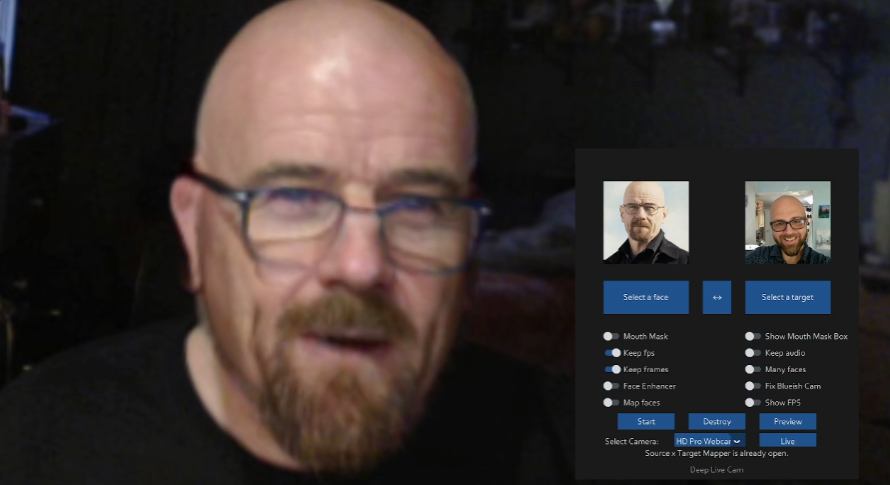The Setup
Let’s get this part out of the way: I didn’t go full hacker mode. There was no blinking green terminal or mysterious code flying by like some Netflix dramatization. My setup was far more pedestrian—and that’s exactly what makes it scary.
The project was titled Deep-Live-Cam, and at its core, it was about building a real-time deepfake camera using open-source tools and a few nudges from ChatGPT. The main ingredients were:
- A capable local machine (Windows 11) with a decent GPU
- OBS Studio (for output control and integration)
- The open-source Deep-Live-Cam GitHub repo, which is surprisingly polished, well-documented, and top-ranked in its category
- And ChatGPT, playing the role of installation whisperer
Now, to be fair, I came in with a decent amount of technical knowledge already. I’ve worked in Python, installed software via terminal, and debugged more than a few command-line tantrums in my time. But even with that background, the assistance from ChatGPT was invaluable—especially for troubleshooting weird dependency issues and quickly recalling obscure shell commands I hadn’t used in ages.
Every step I needed—from installing Python packages to tweaking Windows camera permissions—was handed to me in plain English, with zero need to dive into convoluted documentation. I didn’t even open a README. I just… asked.
Within an afternoon, I was live-swapping my face in 720p, synced to my webcam feed in real time.
The Real Point: This Tech Is Frighteningly Accessible

There was a time not long ago when running something like this meant compiling code, managing dependencies manually, and praying you had the right CUDA version installed. It was a hobbyist niche with a steep learning curve and gatekeeping by complexity.
That’s gone now.
Today, anyone—and I mean anyone with a pulse and a browser—can spin up a real-time deepfake camera with zero programming knowledge. You don’t need to be technical anymore. You just need to be curious. AI, especially tools like ChatGPT, has erased the barrier between thought and execution.
Every time the Deep-Live-Cam repo gets posted on Reddit, a few million more people go “GPT” how to do it. That means this tool isn’t just accessible—it’s viral. And it’s rapidly becoming normalized.
It doesn’t stop at swapping yourself into a Marvel movie. You can target anyone with a few reference photos. This isn’t just a concern about celebrity deepfakes anymore. It’s about regular people. Coworkers. Family. Your ex.
The Double-Edged Lens
There’s an obvious danger here, and it’s not theoretical. People are already using this tech for impersonation scams, harassment, misinformation, and worse. The capability to synthesize someone’s face and voice in real-time is no longer sci-fi. It’s plugin-ready.
But I’m also not here to throw the baby out with the neural net. This same accessibility makes deepfake tech useful for good, too: real-time language dubbing, accessibility aids, educational simulations, and performance art are just a few of the more wholesome possibilities.
Still, none of that negates the fact that it is alarmingly easy now.
So, Why Did I Build It?

Curiosity, mostly. I wanted to see if I could. And I could.
And that terrified me.
I didn’t build it to become someone else. I built it to prove that anyone can—and that we need to talk about what that means.
I wrote this to pose the question to the world that not enough people are asking: What do we do about it? Because if I could pull this off in an afternoon, imagine who else already has—and with what intentions.
Tech is no longer just in the hands of the experts. It’s in everyone’s hands. And the line between hobbyist and hacker, prank and crime, fun and harm? That line is vanishing fast.
Stay curious. Stay cautious. And for the love of all things encrypted, maybe double-check who’s really on the other end of that webcam feed before you hit “Join Meeting.”


Leave a Reply
You must be logged in to post a comment.